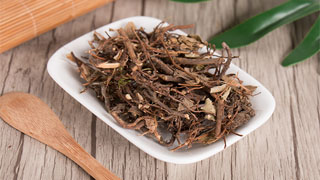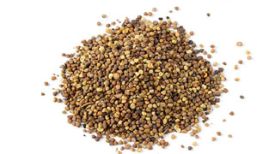
1. Aliases
Ivy, windy vines, fake grape vines, walking vine Polygonum, and ground brocade.2. Plant morphology
Deciduous wood climbing large vine. The branches are thick and robust; The tendrils are short, multi branched, and have suction cups at the ends of the branches. Single leaf alternate; Petiole length 8-20 centimeters; The leaves are broadly ovate, 10-20 centimeters long and 8-17 centimeters wide, with the apex often 3-lobed. The base is heart-shaped, with coarse serrations at the edges, without hair on the top, and soft hairs on the veins below. The leaves on the seedlings or lower branches are smaller and often divided into three leaflets or three lobes. The middle leaflet is obovate, and the two leaflets are obliquely ovate with coarse serrations. The flowers are bisexual, and the cyme usually grows between the two leaves at the top of the short branch; Flower green, count 5; Calyx small, entire: petal apex reflexed; Stamens opposite petals; The flower disc is attached to the ovary, not obvious; Ovary 2 rooms. Berry, blue black when ripe, with a diameter of 6-8 millimeters. The flowering period is from June to July, and the fruiting period is in September.
3. Origin distribution
He often climbs in sparse forests, walls, and rocks, and is also cultivated. Distributed in various regions of North China, East China, Central South, and Southwest.
4. Harvesting and processing
Harvest the stems in autumn, remove the leaves, and cut them into sections; Dig, wash, and slice the roots in winter. Dry in the sun or use fresh.
5. Characteristics of medicinal herbs
The vine stem is cylindrical, gray green, and smooth. The appearance has fine vertical stripes and small round raised skin pores, which are brown in color. Slightly swollen, with forked branching tendrils on the nodes, leaves alternate, often falling off. There is a white pulp in the center of the section, with yellowish white wood and fibrous peeling skin. Slight breath, light taste.
6. Nature, taste, and meridian tropism
Warm in nature, with a spicy and slightly astringent taste.
7. Effect and function
Dispelling wind and relieving pain, promoting blood circulation and unblocking collaterals. It belongs to the category of wind dispelling and dampness strengthening and bone strengthening drugs.
8. Clinical applications
Internal administration: decoction, 15-30 grams; Or soak in wine. External use: In moderation, boil and wash with water; Or apply with grinding juice; Or mash and apply. Indications: Rheumatoid arthritis, hemiplegia after stroke, hemiplegia, headache, postpartum blood stasis, abdominal lumps, injuries caused by falls and bruises, carbuncles, sores, and ulcers.
9. Pharmacological research
Mucus has a mild anti-inflammatory effect on the oral and digestive mucosa.
10. Chemical composition
Contains ingredients such as cyanidin, hydroxyethyl lysine, and hydroxyethyl ornithine.
11. Taboos for use
It is not yet clear.
12. Compatibility prescription
① Treatment of rheumatism and pain: 30-60 grams of climbing tiger vine, decoction in water; Or soak in double the amount of wine, take it internally, and wipe it externally. (Selected Guangxi Materia Medica)
② To treat migraines and muscle and bone pain: 30g of climbing tiger vine, 9g of Angelica sinensis, 6g of Chuanxiong, and 3 pieces of jujube. Boiled in water. (Jiangxi Herbal Medicine)
③ Treatment for rectal bleeding: 500 grams of ivy vine and 500 grams of yellow wine each. Add an appropriate amount of water for decoction, take 4 times a day, and divide into 2 days to finish. (Zhejiang Folk Commonly Used Herbs)
④ Treatment for hemiplegia: 15g of climbing tiger vine, 60g of golden pheasant root, 15g of big blood vine root, 30g of pulling root per kilogram, and a little rock sugar. Boiled in water. (Jiangxi Herbal Medicine)
⑤ Treatment of rheumatoid arthritis: A. 30g of ivy vine stem or root, 30g of stone chlorophytum comosum. Stewed pig feet and feet, take 3-4 times in a row. B. 30g each of Dijin vine stem, Weimao, and sorghum root. Boil in water and rinse with yellow wine. (Zhejiang Folk Commonly Used Herbs)
⑥ Treatment for ulceration of carbuncle and snake wounds: 120-180 grams of climbing tiger vine. Boil in water and wash externally. (Selected Guangxi Materia Medica)
The content of the article is for clinical reference only. Non professionals in traditional Chinese medicine are not allowed to try medication.


